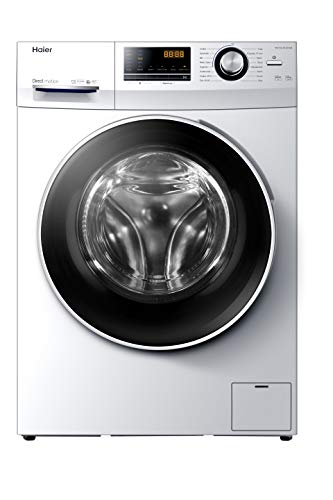10 Apps To Help You Control Your 10kg Front Loader
페이지 정보
작성자 Lonnie 작성일24-03-03 11:39 조회3회 댓글0건관련링크
본문
 Why Buy a 10kg Front Loader?
Why Buy a 10kg Front Loader?The front-loader of 10kg is ideal for big loads of laundry with 13 wash programs including handwash as well as plenty of space for large wash cycles. It's a smart washer Machine 10kg (Ksbellows_en.Acus.kr) equipped with the latest features.
Front loaders generally take longer to wash, aren't available in larger capacities and often suffer from mould and mildew. They are more energy and water efficient than top-loaders.
Energy
The major energy expense of a rated washing machine 10kg 10kg front loader is electricity to heat water to operating temperature, and also to run the motor. These costs can be offset with less energy usage in operation when as compared to top-loaders, with less power during the agitation cycle as well as during spin, and less water. Certain machines come with a low-water cycle that uses less water than the cotton cycle. This saves both water and energy.
In general, front-loading washers consume less soap than top-loaders. The tumbling action of the drum also reduces foamy suds and reduces overflows, without affecting the cleaning. The door Washer Machine 10kg seals and bellows of top-loaders are more susceptible to wear. The mechanical agitator of top-loaders also causes significant wear on clothing fabrics. It drags and falls clothes constantly, forcing them against each other. The degree of abrasion is determined by the amount of fabric that is left on the screen for lint. Lint is primarily composed of stray fibers removed from clothing while drying and washing. To lessen this, many top-loaders are constructed to operate at a slower pace and may have a "freshening" cycle to clean the bellows and mechanical gears.
Water
Top-load washers need an impeller or agitator to force water and detergent through clothes, which creates mechanical wear and abrasion. Front-loaders, on the other hand, Washer machine 10kg use paddles that gently lift and drop clothing inside a spinning drum for cleaning, reducing such wear. The amount of lint contained in dryer lint filters can be used to estimate the wear rate. Lint is made mainly of threads which are removed from clothes during drying and washing.
Front-loading machines are less likely to leak due to less water than top-loaders. True front-loaders will require a bellows seal or seal to stop water getting out of the door during operation, but these systems typically do not require maintenance at the same frequency as their counterparts on top-loaders.
Additionally, front-loaders can operate with cold water or hot and a majority of them without the need for a heating source, making them more energy efficient than most top-load machines. This efficiency can cut down on the cost of operating the same laundry load, especially in areas where detergent, water and energy are expensive.

댓글목록
등록된 댓글이 없습니다.

